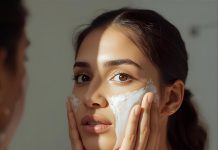In our modern era dominated by manufactured medications, it’s worth considering whether they should be the sole approach to healing. Despite the convenience and prevalence of pharmaceuticals, many individuals are rediscovering the healing potential of medicinal plants and herbs – the roots of traditional herbal remedies that have long served to enhance both physical and mental well-being.
Remarkably, at the turn of the 21st century, 11 per cent of the World Health Organization’s essential drugs were derived solely from flowering plants. Compounds like codeine, quinine, and morphine highlight the profound impact of botanical sources in medicine.
Here, we explore five noteworthy herbs:
Lavender:
Lavender is renowned for its calming properties and pleasant fragrance. It’s commonly used in aromatherapy to promote relaxation and alleviate stress and anxiety. Additionally, lavender oil can be applied topically to soothe minor skin irritations, such as insect bites or burns. Some people also use lavender in teas or culinary dishes for its subtle flavour and potential digestive benefits.
Chamomile:
Chamomile is prized for its calming and sedative effects, making it a popular choice for promoting sleep and relaxation. It’s often brewed into a tea, which can help alleviate insomnia, anxiety, and digestive discomfort. Chamomile tea is also used topically to soothe skin irritation and inflammation, making it a versatile herb for both internal and external use.
Echinacea:
Echinacea is well-known for its immune-boosting properties and is commonly used to prevent or reduce the severity of colds and other respiratory infections. It’s available in various forms, including capsules, tinctures, and teas. Echinacea stimulates the immune system, helping the body fight off pathogens more effectively. However, it’s essential to use echinacea as directed and not for prolonged periods, as prolonged use may diminish its effectiveness.
Tea Tree Oil:
Tea tree oil is a potent essential oil derived from the leaves of the Melaleuca alternifolia tree native to Australia. It’s prized for its antimicrobial and antiseptic properties, making it a popular natural remedy for treating acne, fungal infections, and minor wounds. Tea tree oil can be diluted and applied topically or added to skincare products like cleansers and lotions. However, it’s crucial to perform a patch test before using tea tree oil on the skin, as some individuals may experience irritation or allergic reactions.
Evening Primrose Oil:
Evening primrose oil is extracted from the seeds of the evening primrose plant and is rich in gamma-linolenic acid (GLA), an omega-6 fatty acid with anti-inflammatory properties. It’s commonly used to alleviate symptoms of premenstrual syndrome (PMS) and menopause, such as breast tenderness, mood swings, and hot flashes. Evening primrose oil is available in capsules or as a liquid supplement and is typically taken orally. However, individuals with epilepsy or bleeding disorders should consult their healthcare provider before using evening primrose oil.
These herbs offer promising avenues for therapeutic use, tapping into nature’s vast pharmacopoeia. Yet, it’s essential to approach herbal remedies with discernment. While they hold potential benefits, they’re not panaceas and may carry risks and side effects similar to manufactured medicines. Consulting with healthcare professionals before integrating herbal treatments into one’s regimen is paramount.
By embracing the synergy between modern medicine and traditional herbalism, individuals can optimize their health journey, drawing upon the rich tapestry of healing modalities available.




























